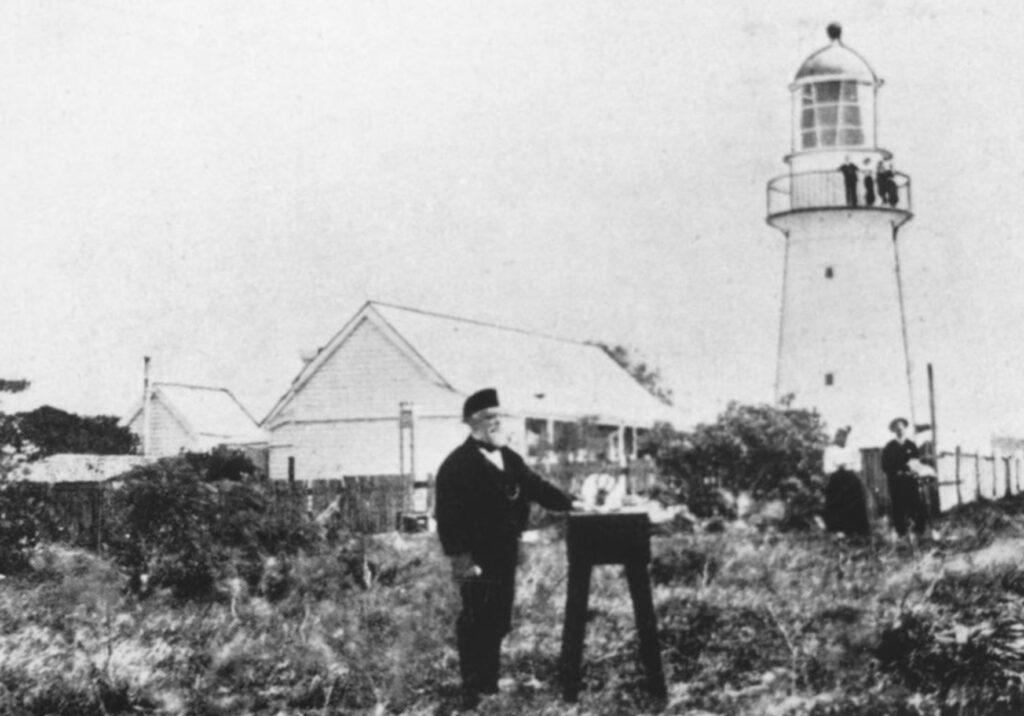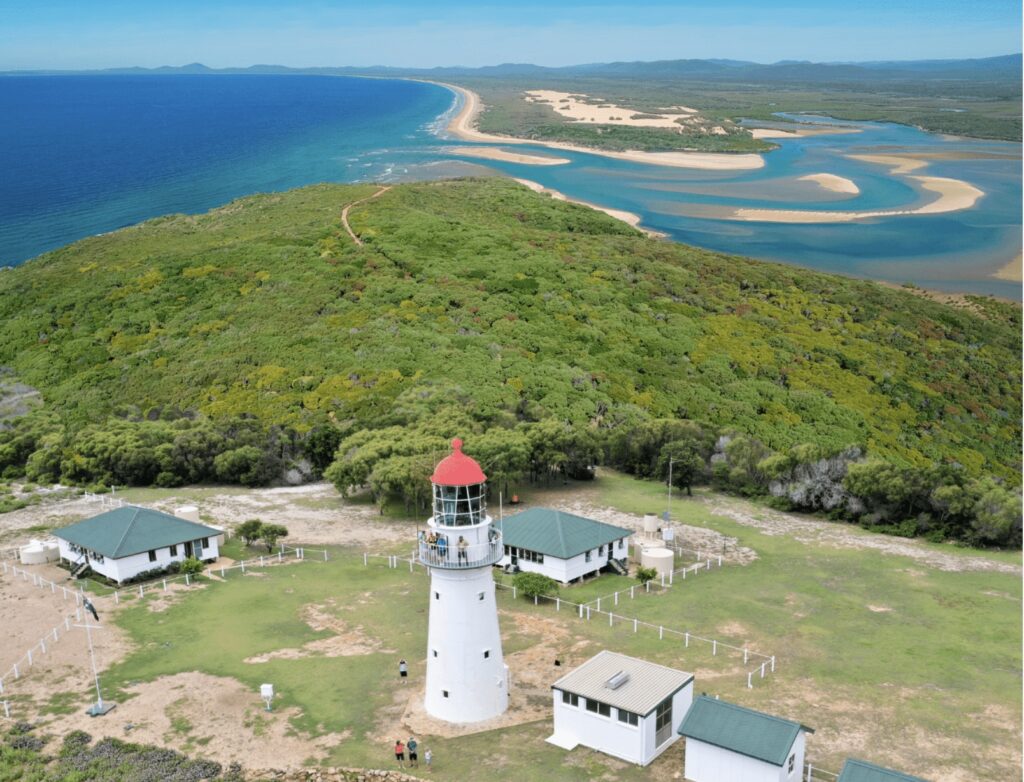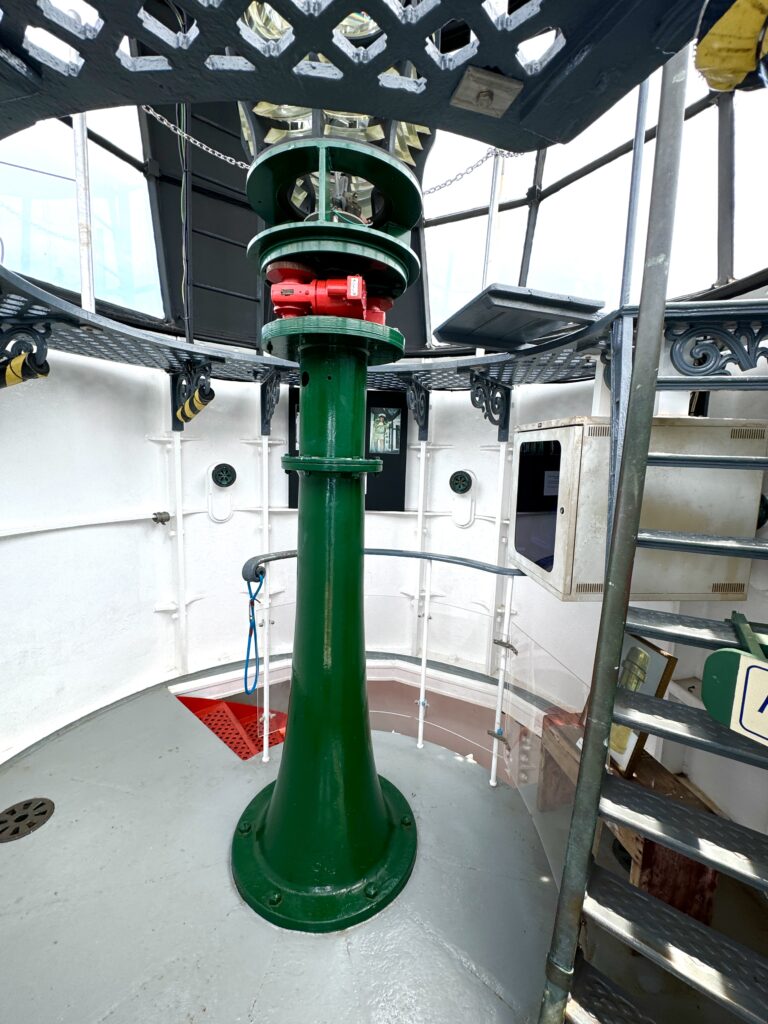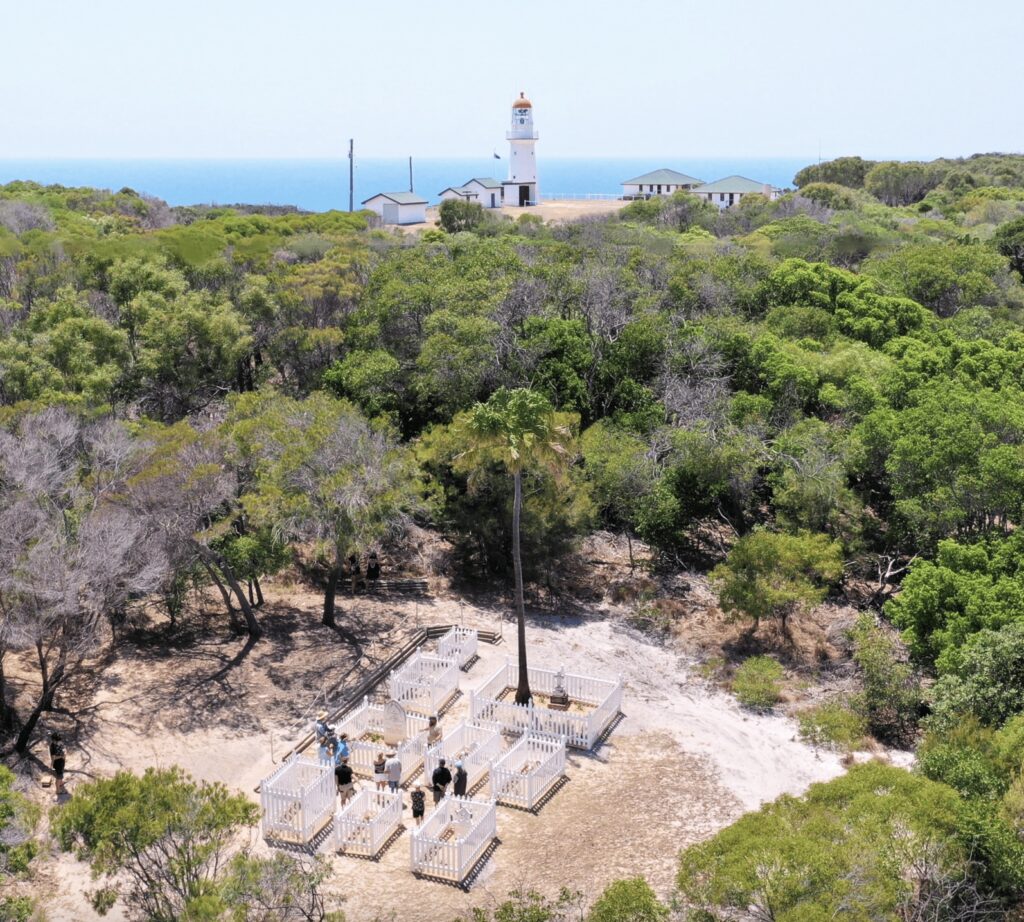
Location:
Bustard Head Lighthouse is located on the south eastern tip of Bustard Head which is 20 km north west of 1770 (Seventeen Seventy) in the Eurimbula National Park.
GPS: Lat: 24° 01’ S : Long: 151° 46’ E
First Lit: July 1868 (automated 1986)
Tower height: 18m,
Focal Height: 102 m
Original Lens: 2nd Order Chance Bros. Dioptric
Range: 21 nml (39 km)
Characteristic: Two white flashes every ten seconds: [Fl(2) W 10s]
History:
The Queensland was granted self government from New South Wales in 1859. In 1862, the Queensland government appointed the first Portmaster, Commander George Poynter Heath. However, it was only in 1864 that two committees were appointed to deal with the issue of coastal lighthouses. One of the locations believed by these committees to require a lighthouse was Bustard Head. In practice, Bustard head became the first to be constructed by the new government. Orders for the tower and the lantern were placed in 1865, with Hennet, Spinks and Company of Bridgewater, England and Chance Brothers of Birmingham, England, respectively. The tower was one of the first in Australia to be constructed using bolted prefabricated segments of cast iron, and one of only two such lighthouses in Queensland, the other being its sibling, Sandy Cape Light. Orders shipped to Brisbane in April 1867, and a construction tender was awarded to W. P. Clark in August 1867, for erecting the lighthouse and building the other buildings required for the station. Though the contract stated six months of construction, actual work took ten months, and the light was first lit on 29 June 1868.






In May 1932 the original cottages were destroyed in fire. In 1935 the stairs which were originally outside the tower were relocated within the tower. The lighthouse was automated during 1985, and finally de-manned in 1986, leaving it to neglect and vandalism for the next 16 years.
In 2001 the Bustard Head Lighthouse Association, a volunteer organisation led by Stuart Buchanan, obtained a twenty-year lease on the premises and started restoring it using funds from a federal grant, local businesses and self-funding. The station was fully restored, and it is now managed by the association.





Structures:
The lighthouse is conical in form. It stands 18 metres (59 ft) high, constructed of prefabricated cast iron plates, and painted white, with splayed flanges at the base, much like the Sandy Cape Light. The tower is topped by a cantilevered iron gallery, with a simple iron balustrade. Inside the tower is a spiral iron staircase with cast iron steps, adjoined to the internal walls. Entrance to the lighthouse was originally via an external flight of stairs and a small landing leading to a door on the second floor. In 1935 and entrance was provided on the ground floor and the stairs were relocated within the tower. On top of the gallery is the original 9-foot-6-inch (2.90 m) diameter Chance Bros lantern. In the lantern room is a catwalk, supported by ornate iron brackets. The dome of the lantern is copper clad and painted red, and itself topped with a spherical knob and a weather vane. The lighthouse is fenced.[5]
The residences at the station consist of two one-storey lighthouse keeper’s cottages. They are timber framed, clad with fibro and with corrugated fibro roofs. One of them is occupied by a site manager and the other serves as a museum containing an array of lighthouse artefacts.
There are several other structures including a disused powerhouse, fuel store, a tool shed and stores shed all constructed in a similar fashion to the cottages, i.e. woodv frame with fibro cladding and corrugated iron roofs.
Also on the premises is a cemetery surrounded by a white picket fence, located about 300 metre northeast of the station. It contains nine graves dating from 1879 to 1911 as well as two unmarked, child-sized graves.
Myths, Mysteries & Tragedies:
ON 29 JUNE 1868 the Bustard Head Lighthouse in northern Queendland was lit for the first time. Intended as a beacon of safety on Queensland’s treacherous shores, the lighthouse’s construction was nonetheless marred by tragedy. A workman was struck on the head and died whilst working on the remote building. It was to be the first of many deaths.
In 1887 Kate Gibson, the wife of the Bustard Head lighthouse keeper, disappeared. Her children found her with a slashed throat not far from the lighthouse. Her death was ruled a suicide and she was buried on the Bustard Head grounds. At the time her heartbroken children wrote a devastating epitaph for the Gladstone Observer:
“We cooeed our best at dead of night
The dread it could not hear us
The children cry ‘Oh Mother dear’
What keeps you from us
With weary anxious eyes we search
O’er sand, ridge, scrub and bush
But the warm heart was cold in death
Of her who gave us birth”
Just two years after Kate’s death, tragedy struck the Gibson family and the lighthouse once more. The keeper Nils and his 20 year old daughter Mary left Bustard Head in a sailboat, with two others. The boat capsized in the treacherous waters and only Nils survived.
This was almost the turn of the century. Less than a decade later Milly Waye, who was born at the lighthouse, died at home. The two year old was burnt by boiling water and the injuries, after nine hours of agony, proved fatal.
It seems hard to believe, but in 1912 tragedy struck again, this time in the form of a still unsolved crime. The daughter of the lighthouse keeper was abducted whilst returning home and the man with her shot.
With his dying breaths he identified the attacker as a local boy, but neither the daughter nor the accused were ever found. It was alleged that the attacker, the dead escort and the girl had all been caught up in a twisted love triangle. The search for the two became the most expensive police search Queensland had ever seen.


Site operation and visiting
The light is operated by the AMSA and the site is managed by the Bustard Head Lighthouse Association. The site and tower are exclusively open to specialised LARC tours departing from 1770 subject to booking.